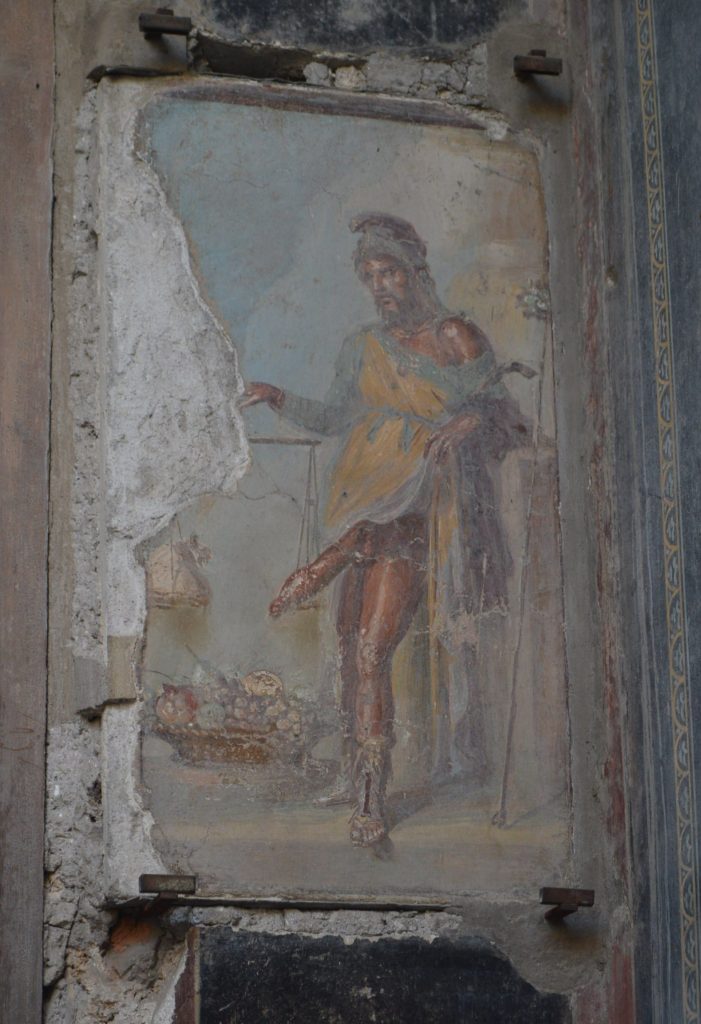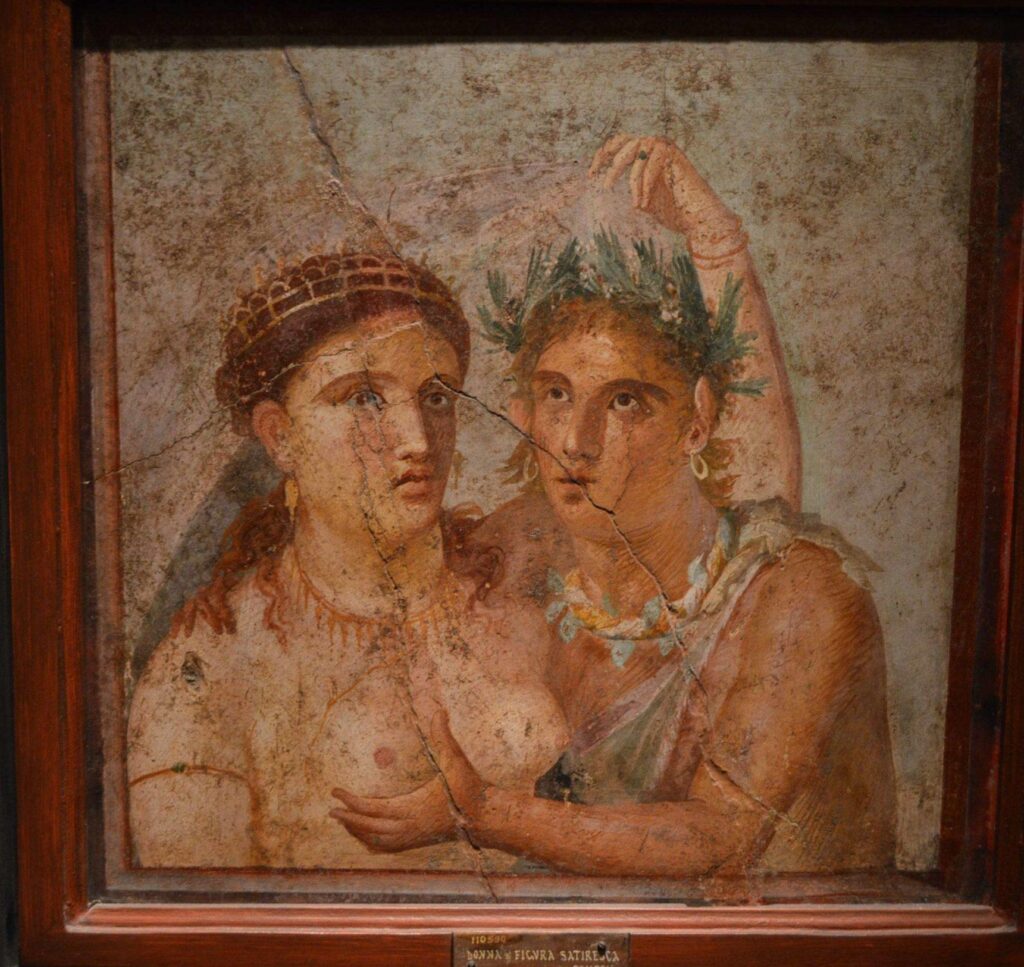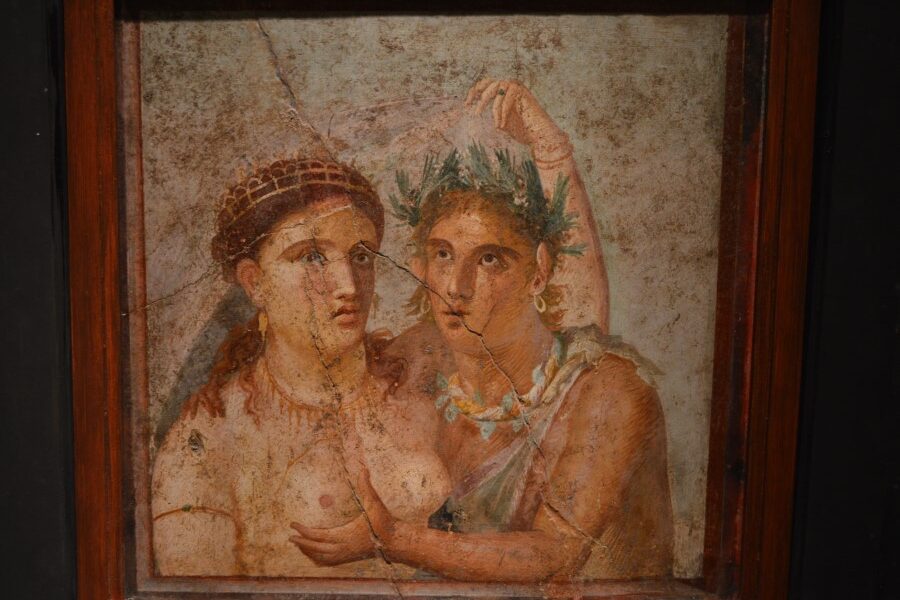The Pompeii Archaeological tour is supplemental to the Mt Vesuvius tour. They are historically inseparable and lie close together in proximity. Additionally, public transport in the area is convenient and inexpensive.
It is possible to tour both locations in the same day. However, I would certainly recommend that you take a full day for the Pompeii archaeological tour and also the Vesuvius volcano tour. As a result you will have the time to fully research and enjoy both locations.
Where is the Pompeii Archaeological Tour Site?
For the Pompeii archaeological tour, take the Circumvesuviana train from Naples (or Sorrento). If you are visiting from Naples go to Garibaldi station to catch the economical 40 minute train ride to the Pompeii ruins. If traveling from Sorrento, the ride is shorter – only 20 minutes.
However, take note that there are 2 cities named Pompeii in close proximity! One Pompeii is the archeological ruins and the other is a functioning city named “Pompeii”. Additionally, both of them have their own train station which contains the word “Pompeii”!
Unfortunately, this can create a bit of confusion for visitors. Take note that the stop for the Pompeii archaeological tour is Pompeii Scavi-Villa dei Misteri. From that station, the entrance to the archaeological site is a few minutes down the street in front of the station.
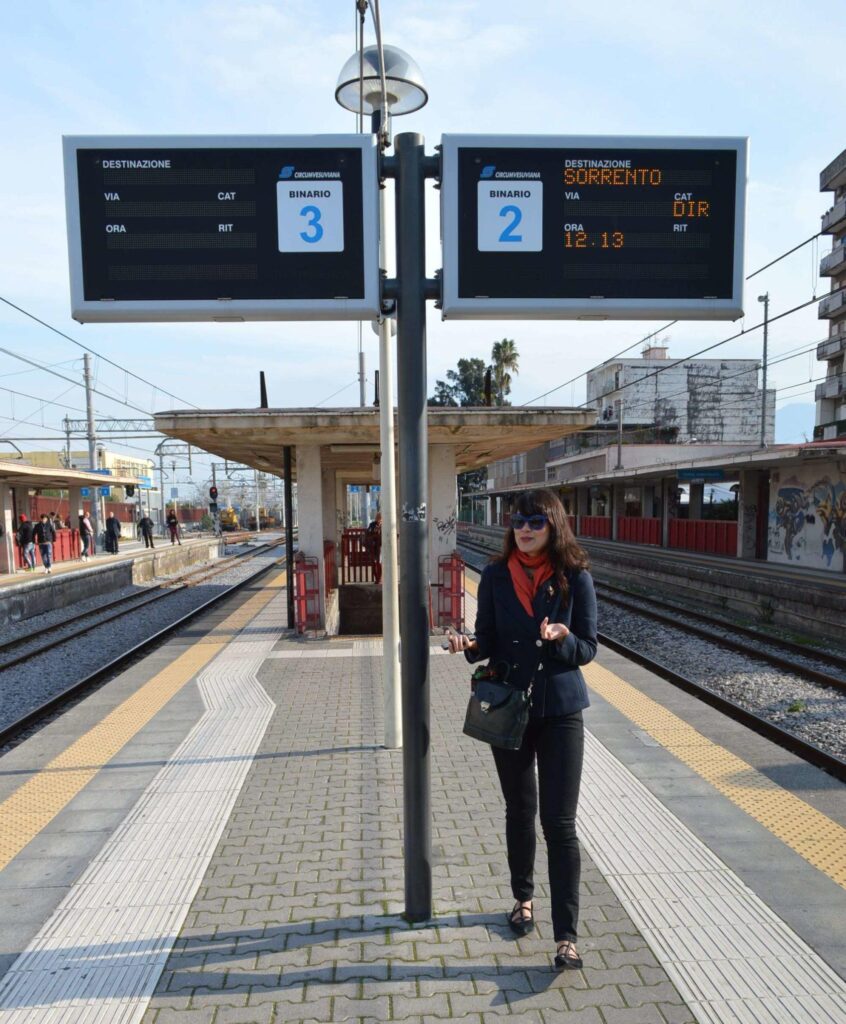
Pompeii Archaeological Tour Facts and History
The ancient city of Pompeii was founded by the Oscans in the 7th century B.C.E. After an unsuccessful rebellion Pompeii was formally incorporated into the Roman Republic in 80 B.C.E. The city was subsequently destroyed 159 years later during the eruption of Mt. Vesuvius.
During the eruption of Mt Vesuvius the city was buried under 4-6 meters of tephra from the resulting pyroclastic flows. As a result, the city ruins were preserved for 1500 years until their discovery in 1599. The city has since been excavated and it has served as a tourist destination for over 250 years.
Pompeii’s population of about 11,000 inhabitants were buried during the eruption. During the excavations archeologists used plaster to fill in the voids that were in human form. As a result, they could study the position the bodies were in when they died.


Mosaic Art Photos at Pompeii Ruins
The excavation of Pompeii is a very valuable archeological tool. This is because the preservation of the city allows a glimpse into the lives of the Romans during the heights of empire.
One of the most famous mosaics discovered at Pompeii was the battle scene between Alexander the Great and Darius III. This was a floor mosaic found in the “House of the Fawn”. As a result of it’s position and large size. (3×5 meters) it was not possible to fit it into a single photo. However, I included some segmented photos of it below.


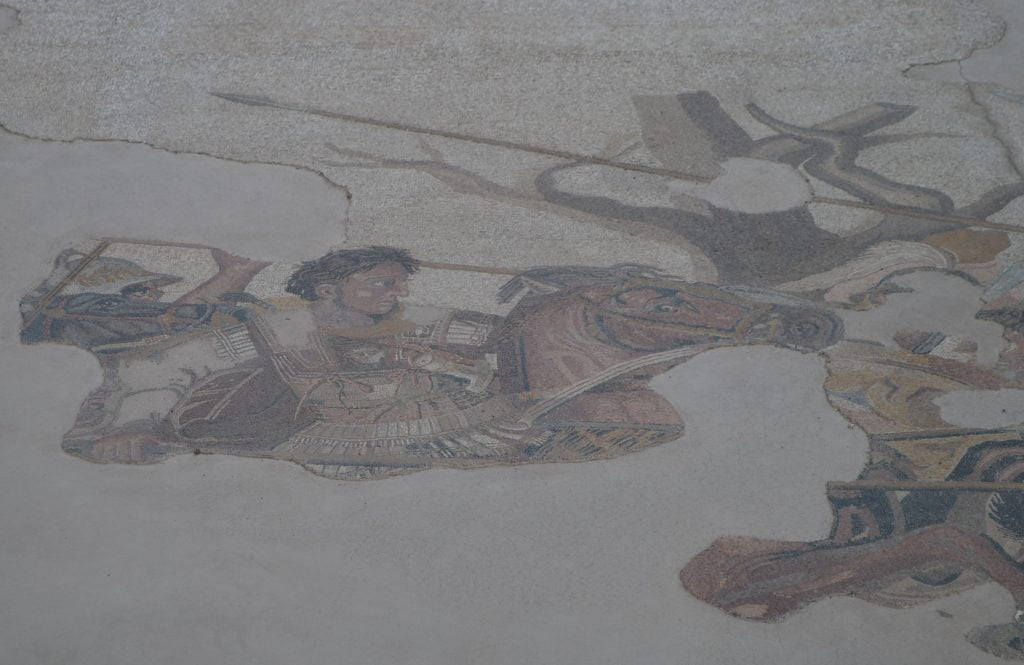
Additionally, a lot of the artwork preserved at the ruins were pornographic in nature. Indeed, this provides a glimpse into the life and times of the ancient Romans. The artwork that remains at the excavation site is limited. However, there is a much larger exhibit at the archaeology museum in Naples.
